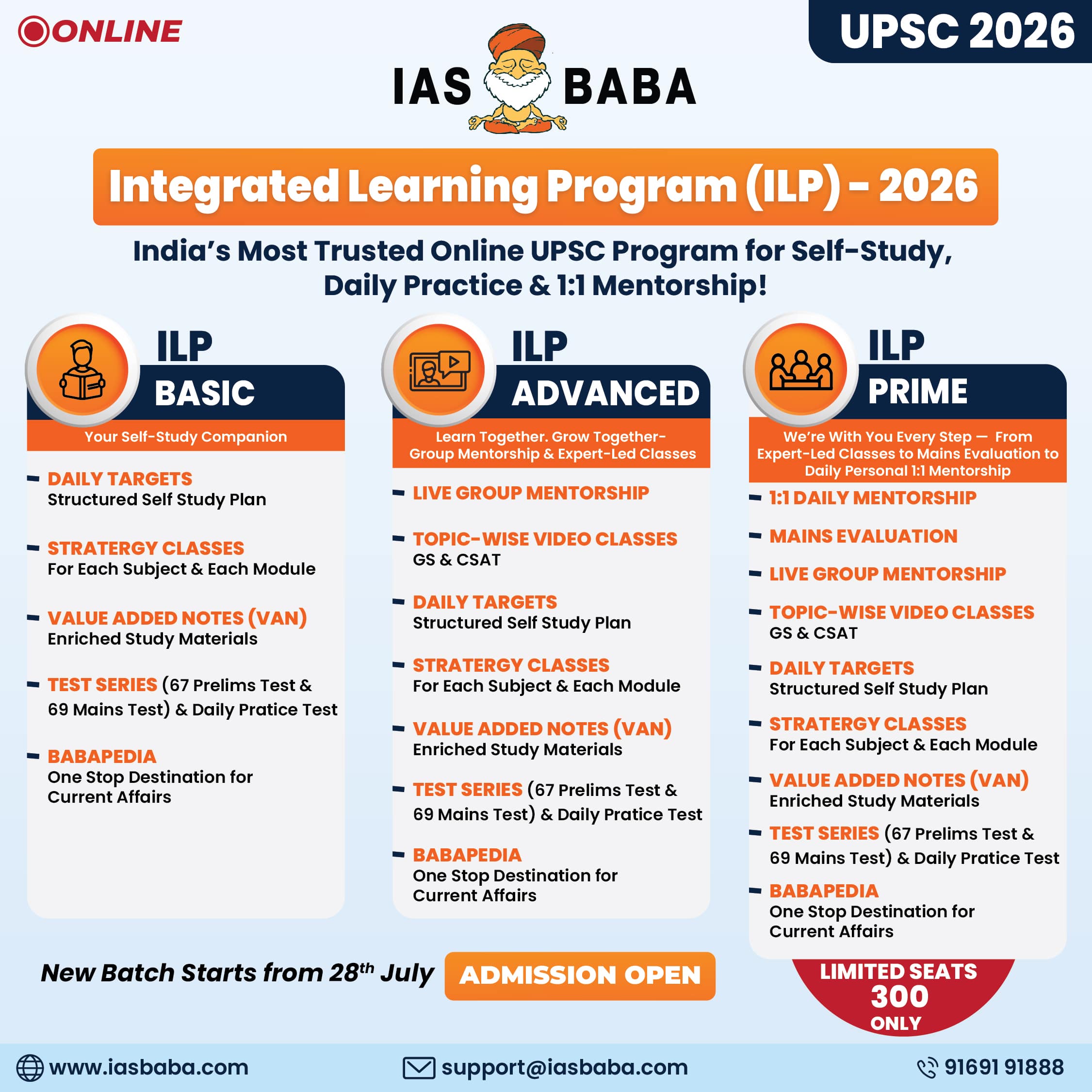IASbaba's Daily Current Affairs Analysis, IASbaba's Daily Current Affairs Feb 2016, UPSC
Archives
IASbaba’s Daily Current Affairs – 3rd February, 2016
ECONOMICS
TOPIC:
- General studies 2:
- Government policies and interventions for development in various sectors and issues arising out of their design and implementation.
- Welfare schemes for vulnerable sections of the population by the Centre and States and the performance of these schemes; mechanisms, laws, institutions and Bodies constituted for the protection and betterment of these vulnerable sections.
- General studies 3:
- Indian Economy and issues relating to planning, mobilization of resources, growth, development and employment.
- Agriculture related issues
Insure farmers, ensure their future
Jammu: Litchi was flowering-much earlier and out of season because winter had not come and it was warmer than usual; but as the chill is setting in, the flowers are falling and there will be no fruit this summer
Bihar: Standing wheat crops were hit last fortnight by unseasonal hail and bitter cold that came after days of warmer-than-usual temperatures
Pathetic State of Insurance Awareness
Despite more than a quarter of a century of implementation- the penetration of crop insurance is not up to the mark and proportion of voluntary farmers insuring their crops is still very small.
What ails the Crop Insurance Sector?
- High Basis Risk
- Delay in Settlement of Claims
- Unattractive guaranteed yields
- Lack of adequate number of weather stations- To reflect the spatial variability in weather pattern & poor product design
- Lack of product benchmarking& uniform standards in product design
- Lack of correlation between the weather index & yield experience
Urgent Requirement
Awareness: We need to understand the magnitude of the current events related to climate change happening all around the world and keep updating our preparedness plan accordingly. This can help us to stay aware of the magnitude of the possible catastrophe as well as help us stay prepared beforehand.
Requirement of insurance for an increasingly climate-vulnerable world: It is important to formulate a working plan for the poor, who have little collateral and faces the highest risk. The new crop insurance policy called Pradhan Mantri Fasal Bima Yojana (PMFBY), which will replace the existing national agricultural insurance scheme, can be considered a step ahead in addressing some concerns. But there is a long way to go to design a universal insurance scheme, which can be an effective safety net for farmers.
Proper estimation of Crop Damage: Estimating the crop damage accurately and then paying for the claim without fuss and delay is still a sought after phenomena in India. In PMFBY the insurance unit is now a village, as against the revenue administrative unit of a block in the previous scheme. A block covers a large area with sub-regional variations in weather events. Therefore, if it rains heavily in a few villages but not across the block, then farmers would not be able to claim damage without evidence to show this anomaly. Therefore, the geographic risk to be addressed goes down with enormous cost implications with weather stations recording this anomaly in a grossly inadequate manner
System of verifying claims: State governments are expected to conduct crop-cutting experiments to estimate what would be the actual yield as well as conduct the estimation of the loss. These experiments are often poorly done and do not give real value of the produce. Then, when the claim is filed, the assessment is done by the patwari, the lowest revenue official in the district who is expected to visit and estimate damage and thus starts the tale of corruption.
IASbaba’s Views:
- There is a need for the increased usage of new technologies-remote-sensing to mobile-based image-capturing systems. For example, technologies like the Terrestrial Observation and Prediction System (TOPS), a modelling framework that assimilates data from earth-orbiting satellites and ground weather stations and creates spatial continuous grids at 1km resolution can be helpful.
- Also, the use of mobile phone to improve yield data and timeliness of processing claims has been portrayed to be the ultimate warrior to deal with problems of delays.
- Insurance coverage has to be universal and pay-outs should be enough to cover the losses. An exclusive institutional set-up is thus, vital for designing farmer centric insurance products
Schemes:
“The Pradhan Mantri Fasal Bima Yojana”
- Replaces the existing National Agricultural Insurance Scheme (NAIS) and Modified NAIS (MNIAS)
- In line with One Nation – One Scheme theme
- Lowest premium rate
- Inundation— Included under localised risk cover
- Post-harvest losses arising out of cyclone and unseasonal rain have been covered
- Emphasis on mobile and satellite technology to facilitate accurate assessment and quick settlement of claims
Thus, incorporates the best features of all previous schemes and at the same time, all previous shortcomings/weaknesses have been removed
National Crop Insurance Programme (NCIP) / Rashtriya Fasal Bima Karyakram (RFBK)
- NCIP is a Central Sector Scheme formulated by merging National Agricultural Insurance Scheme (NAIS), Pilot Weather Based Crop Insurance Scheme (WBCIS), Pilot Modified National Agricultural Insurance Scheme (MNAIS) and Pilot Coconut Palm Insurance Scheme (CPIS).
- Loanee farmers will be covered on compulsory basis under the component- scheme of NCIP notified by the concerned state, while non-loanee farmers will choose either MNAIS or WBCIS component.
WEATHER BASED CROP INSURANCE SCHEME
- Weather Based Crop Insurance aims to mitigate the hardship of the insured farmers against the likelihood of financial loss on account of anticipated crop loss resulting from incidence of adverse conditions of weather parameters like rainfall, temperature, frost, humidity etc.
- Weather based Crop Insurance uses weather parameters as ‘proxy’ for crop yields in compensating the cultivators for deemed crop losses.
Connecting the Dots:
- Is weather insurance best suited to cover catastrophic losses? Explain.
- Do you agree that the ‘insurance’ (product) design exhibits limitations in being the missing piece of puzzle to adjust to the climate-change centric global change? Substantiate your viewpoints and suggest the way ahead.
ECONOMICS
TOPIC:
General studies 2:
- Functions and responsibilities of the Union and the States, issues and challenges pertaining to the federal structure, devolution of powers and finances up to local levels and challenges therein.
- Government policies and interventions for development in various sectors and issues arising out of their design and implementation.
General studies 3:
- Indian Economy and issues relating to planning, mobilization of resources, growth, development Government Budgeting.
Fiscal responsibility and federalism
Fiscal Deficit = Total Revenue – Total Expenditure
2015: India’s fiscal deficit has reached 68 percent of its full-year target (totalling 3.79 trillion rupees)
- Net tax receipts:7 trillion rupees in the first half of the fiscal year to March 2016
- Total Spending:1 trillion rupees
Note:
- Most of government’s expenditure is non-discretionary — interest payments, salaries, defence, and subsidies like food and fertiliser
- More than a third of its revenues are corporate taxes, which by definition depend on corporate profits, which are hard to predict in the current scenario
Reasons favouring the Deficit
- Signs of revival in private investment not visible
- Untimely bounce in commodity prices
- Seventh Pay Commission- Expected to add an additional 0.65 per cent of GDP to expenditure
- One-rank one-pension obligations
- Stress on revenue collections
- Non-availability of gains from declining global oil prices
- Weakening rural demand is weakening
Impact of the Declining Nominal GDP
Adverse impact on indicators—
- Current account deficit,
- Sales growth,
- Growth in profit and tax collections
Revenue Measures employed
- Excise duty hikes on diesel and petrol,
- Withdrawal of exemptions from—
- Motor vehicles,
- Capital goods
- Consumer durables,
- Levy of 0.5 per cent Swachh Bharat Cess and
- Increase in service tax rate to 14 per cent from 12.36 per cent
Difficult Road Ahead
- Commodity prices are not expected to register any major bounce back
- Advantage in revenue collection due to falling global prices will be missing
- The subsidy bill might provide some cushion to the government
- Centre’s fiscal position and its dependency on the global price of oil—
- India imports about 80 per cent of its oil needs and the subsidies are unsustainable in the long run
- 2013- Mechanism for reducing diesel subsidies came into being
- Gas cylinder subsidies have been capped, but fertiliser and kerosene subsidies remain to be addressed.
Twin devolutions
Centre follows the process of passing the responsibility for several Centrally-Sponsored Schemes to states, which were earlier, shared between the relevant central ministry and the state authorities
- 14th Finance Commission in 2015 increased by 10 whole percentage points – from 32 per cent to 42 per cent – the proportion of taxes devolved to states
- 2015-16 Union Budget– Centre passed full funding responsibility for several previously shared schemes on to the states
- ‘UDAY’ scheme: Several States have signed for this scheme which deals with the restructuring of power debt (power-related liabilities in State’s books)
Pressure to “pause” fiscal consolidation:
- In order to enhance stimulus spending in the wake of subdued domestic and global demand,
- To finance an infrastructure build-out
- Clouded assumptions dealing with the implementation of the Goods and Services Tax and questions on whether or not it will be completely revenue-neutral
Will it happen again in the next fiscal year?
It might not
- Spill over of the deficit seems to be much lower, and revenue targets seem credible (indirect taxes are growing much faster than budgeted)
- Government, through a prudent increase in taxes on petrol and diesel, has retained more than half of the benefits of lower oil prices, improving its finances
IASbaba’s Views
- The more the fiscal deficit, the more dangerous elements of ‘Greece crisis’ looks towards India which will lead to adverse consequences—
- Outflow of capital
- Adverse impact on currency rates
- Knock off in the fiscal discipline
- Fiscal Management, today is in need of professional advice and therefore, the creation of a catalyst service which analyses the cost and comes to a realistic assessment of cost is necessarily required
- More structural changes in the Plan spending and definitive measures to contain Non-Plan spending within sustainable limits needs to be cultivated in the discipline as well as reducing reliance on tactics like pushing out expenditure or pulling in revenues, and instead working with more credible fiscal targets would be a better tactic towards achieving development
- Government should keep looking for ways and at ways to raise revenue, especially in the absence of non-tax windfalls like coal auction next fiscal, etc
Connecting the Dots:
- Is the current working of ‘fiscal management’ creating unnecessary economic volatility? Discuss.
- The federal structure of India does not give the central government any control over the state governments. Critically examine.
MUST READ
Gearing up for the Zika threat
Beyond alliance agendas in J&K
Related Articles:
How the Kashmir valley is changing?
Unfinished Business of Partition: Article 370
Let the rupee slide- The economy is best served by lowering interest rates and blocking protectionism.
India tops global confidence index- But recessionary sentiment still strong, finds Nielsen 2015 report for December quarter
Engaging Myanmar as it moves to democracy- Economic and strategic imperatives both demand building close ties
Related Articles:
India Myanmar Relations: An analysis
Piketty and income tax in India- India would do well to heed Piketty’s advice: Lowering inequality requires a higher income tax-to-GDP ratio
Nuclear programme headed nowhere
Cattle care : Livestock diversity is crucial for food security
Related Articles:













